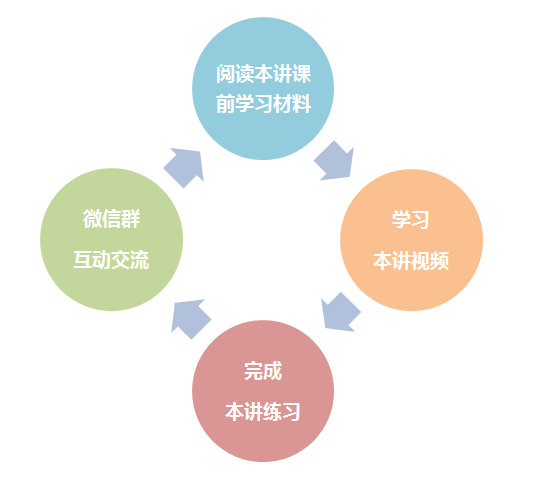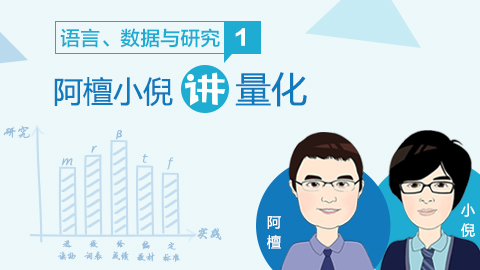【课程简介】
本课程是为广大高校外语教师、应用语言学方向研究生以及高年级本科生设计的 “语言数据分析” 数字课程。课程采用“故事情景浸入、典型案例讲解、完整报告示范”,系统讲解语言数据分析的基础知识和核心技能。
基础知识强调对研究设计中三个基本概念的理解(问题、数据及回答),核心技能则强调在具体的研究情景中能够胜任数据收集、软件使用及报告撰写等主要任务。
课程旨在帮助学员学会形成自己的研究问题,并针对研究问题采用合适的研究方法收集数据、分析数据、撰写报告来回答问题,从而为今后研究设计、课题申请、毕业论文及期刊论文的撰写和发表奠定坚实的方法论基础。
【主讲专家】

金 檀 (主讲专家)
华南师范大学外国语言文化学院教授,研究兴趣为语料库语言学、语言测试与评估及计算机辅助语言学习。开展口语表现诊断研究,主持研制“口语特征评分法”,提供口语反馈的智能辅助;开展阅读难度调控研究,主持开发“阅读分级指难针”,提供阅读素材的智能改编;开展写作语体匹配研究,主持建设“写作表达范文库”,提供写作资源的智能推荐。

倪 竞 (主讲专家)
博士,毕业于香港中文大学教育心理学系,现任教于九江学院,研究领域为咨询心理学、医学心理学及量化统计方法。在SSCI英文期刊和CSSCI/中文核心期刊上发表多篇论文,担任在线微课“语言、数据与研究:阿檀小倪讲量化”主讲,并参与“英语演讲语料库”及在线分析工具“文本指难针”的研发工作。倪竞曾参与多项大型科研项目,例如国家社科重大项目“人际和谐心理健康促进技术”,负责部分研究设计、数据收集和数据分析等工作。
【课程目录】
第1讲 研究:用数据回答问题
第2讲 描述:大致情况如何?
第3讲 相关:它俩有何关系?
第4讲 回归:它们有何关系?
第5讲 对比:它俩有何差异?
第6讲 比较:它们有何差异?
【课程特色】
90后本科生小凯讲述趣味研究故事,帮助学员寻找研究问题
80后审稿人阿檀精选国际期刊案例,帮助学员学习科研方法
85后数据控小倪演练软件操作示范,帮助学员撰写学术报告
【课程目标】
1. 针对高校一线外语教师,该课程可帮助解决以下问题:
1)经典:“国际期刊论文”帮助您顺利突破审稿难关,提升投稿成功几率;
2)案例:“精选教学故事”帮助您快速准确发现研究问题、形成研究设计;
3)示范:“软件操作录屏”帮助您学会SPSS软件、进行专业的数据分析。
2. 针对语言学相关专业学生,该课程可帮助解决以下问题:
1)毕业:培养科研能力与数据素养,为毕业开题与论文写作奠定量化研究基础;
2)研究:了解研究基本方法与步骤,学会使用相关统计软件,成功变身量化研究达人!
【学习计划】

【证书机制】

【参考文献】
学员在学习第2-6讲视频前,请务必阅读参考文献:
1. Webb, S., & Macalister, J. (2013). Is Text written for children useful for L2 extensive reading? TESOL Quarterly, 47(2), 300-322. [第2讲]
2. Brezina, V., & Gablasova, D. (2015). Is there a core general vocabulary? Introducing the New General Service List. Applied Linguistics, 36(1), 1-22. [第3讲]
3. Jin, T., & Mak, B. (2013). Distinguishing features in scoring L2 Chinese speaking performance: How do they work? Language Testing, 30(1), 23-47. [第4讲]
4. Crossley, S., Louwerse, M., McCarthy, P., & McNamara, D. (2007). A linguistic analysis of simplified and authentic texts. The Modern Language Journal, 91(1), 15-30. [第5讲]
5. Gamson, D. A., Lu, X., & Eckert, S. A. (2013). Challenging the research base of the common core state standards: A historical reanalysis of text complexity. Educational Researcher, 42(7), 381-391. [第6讲]
【在线工具】
本课程推荐工具如下,供学员使用参考:
1. Range词汇工具
网址:http://www.victoria.ac.nz/lals/about/staff/paul-nation
2. Sketch Engine
网址:https://www.sketchengine.co.uk/
3. 英语文本指难针
网址:http://languagedata.net/tester/
4. Coh-Metrix
5. Lexile
6. 汉语文本指难针
网址:http://languagedata.net/editor/
【适应人群】
1. 高校外语教师,尤其是一线青年教师(准备国际/学术论文撰写、申请海外深造、国外学术交流等)
2. 语言学相关专业硕士及博士研究生
3. 语言学相关专业本科高年级学生(保研或考研意向、申请海外留学等)
【专家评语】
Tan and his collaborators have been trying out a number of innovative approaches in the field of applied linguistics. They created the first scoring method based on rater confidence for performance tests, leading to the publication of an approach known as “confidence scoring” (2012). They employed machine-learning techniques to assess text complexity and provide feedback for simplification, producing the free online “text assessor” tool (2016). This time around, they have created an innovative internet-based quantitative method course for language teachers in China.
Tan is aware of the problem that few quantitative method courses in our field touch on how to conceptualize quantitative questions teachers are interested in, as well as which method may be employed with respect to the questions proposed. In this connection, the course features “question-driven method learning with leading studies”. Stories most familiar to teachers in China are first presented to illustrate the research contexts and to showcase how the related research questions are proposed. With specific questions in mind, quantitative studies published in leading academic journals such as Applied Linguistics and TESOL Quarterly are then selected, illustrating how research design fits the research questions. In specifying the research design, detailed instructions on data collection are provided, together with step-by-step demonstrations available on the data analysis.
I hope teachers in China can benefit from Tan and his collaborators’ innovative attempts at teaching quantitative methods online.
—David Coniam
Chair Professor
The Hong Kong Institute of Education


